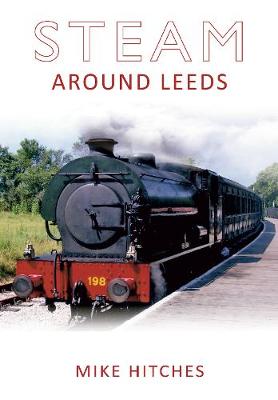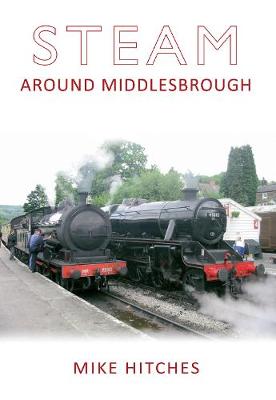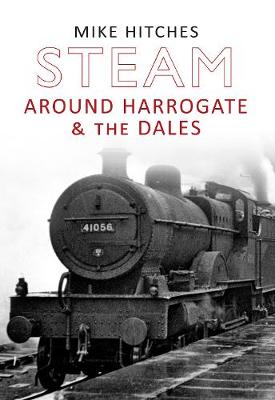Steam Around ...
7 total works
Having been established as a seaside resort since the seventeenth century, Scarborough was an attractive destination for the new railways of the mid nineteenth century, and the town became part of George Hudson's empire by the late 1840s. However, the line through Scarborough was not the first line to be built in the area - a line had been constructed in the 1830s connecting Whitby with the market town of Pickering. From such developments, routes were established which finally put Filey on the railway map, and several branch lines were built connecting rural outposts with the main lines. This book relates the development of these lines and their lives under the NER, LNER and BR, until their eventual closure under Dr Beeching. All is not lost, however, and the re-establishment of a preserved line between Pickering and Grosmont is also covered along with main line steam into Scarborough, recalling the wonderful days when Scarborough was descended upon by thousands of holidaymakers who would have come to this famous resort by train. Timetables and locoshed allocations give an idea of the locomotive types which operated in this area of North Yorkshire and the sort of service passengers could expect both on the main lines and rural branches, giving as complete a picture as possible.
The manufacture of woollen products was one of the foremost industries in Leeds and the West Riding of Yorkshire. The railway companies were keen to gain a foothold in the region to profit from the movement of raw wool and finished products which had been transported along the Leeds and Liverpool Canal and River Aire since the eighteenth century. The discovery of coal in the south of the county, which was to power the mills and factories within the West Riding and further afield, was another attraction for the railways. Several railway companies competed for freight and passenger traffic, including the York and North Midland Railway, controlled by 'The Railway King', George Hudson. Indeed, he also had influence in other railways serving the locality, including the North Midland Railway, and was responsible for the formation of the Midland Railway, which also served the area. Before the 1923 'grouping', five railway companies competed for traffic in the West Riding: the Midland Railway, the Great Northern Railway, the Lancashire and Yorkshire Railway, the North Eastern Railway, and the London and North Western Railway. Each company had their own stations, locosheds, and warehouses in Leeds and the West Riding, creating a diverse pattern of architectural styles. With each company producing their own engines, there was also a great variety of locomotive design. The independence of and competition between the railway companies combined to form an intriguing background to the story of the railway systems in Leeds and the West Riding.
The north-east of England and the Middlesbrough area are the birthplace and cradle of modern railways. Collieries had been established in the North East since the Industrial Revolution and wagonways were constructed using horse power to transfer coal from pitheads to the coast for onward shipment to the capital and elsewhere. The Stockton & Darlington Railway (S&DR), the first public railway in the world, received royal assent in 1821. In 1831, Middlesbrough became part of the infant railway network when the S&DR extended its line from Stockton. At that time, Middlesbrough was no more than a small fishing community, but it did lie downstream of shallows which had to be negotiated by ships sailing from Stockton Wharf. Soon afterwards, ironstone deposits were discovered nearby and, along with coal, were brought to Middlesbrough by rail, allowing the establishment of a thriving iron and steel industry.
From then until the Beeching Axe of the 1960s, the railways around Middlesbrough were still busy with passengers and freight. Much of the railway system around Middlesbrough remains intact, serving industries in the area, but local stations have ceased to exist, much like the steam locomotives that were a major part of the history of the area for some 150 years.
From then until the Beeching Axe of the 1960s, the railways around Middlesbrough were still busy with passengers and freight. Much of the railway system around Middlesbrough remains intact, serving industries in the area, but local stations have ceased to exist, much like the steam locomotives that were a major part of the history of the area for some 150 years.
Gateway to the Yorkshire Dales, Harrogate has long been a centre of railway activity, being first approached by George Hudson's York & North Midland Railway, closely followed by the Leeds & Thirsk Railway (later to become the Leeds Northern Railway). The town still retains a railway network, now serving commuters to Leeds, Bradford and elsewhere. Several branches served the dales themselves, although they only operated rare passenger services through places like Wensleydale, Nidderdale and Teesdale, most traffic being agricultural. Many of these branches were closed following the Beeching Report in the 1960s, but a section of the Wensleydale branch remains open and allows a picturesque ride through one of the dales, thanks to part of the line remaining open until the 1990s to serve a local quarry at Redmire. The East Coast Main Line north of York to Darlington is also represented as it too served the dales branches. Perhaps the most famous line in the area is the ex-Midland Railway's Settle - Carlisle route, saved by Michael Portillo, the Conservative Transport Secretary, in the 1980s, when British Rail wished to close it. The line now plays host to steam excursions and is very popular with railway enthusiasts. In Steam Around Harrogate & the Dales, Mike Hitches explores the railway history of another area of Yorkshire in the glory days of steam. Days when the railway formed an important part of the infrastructure and thousands of passengers used the trains. Mike covers shed allocations, timetables and preserved lines in this well-illustrated book.
The North Wales landscape contains everything from steelworks and collieries to national parks and seaside resorts. Thus, there was plenty of traffic to interest the various railway companies that would be established in the area. The main reason for a railway in North Wales, however, was to create a speedier link between Westminster and Ireland. Although the most important railway in North Wales was the Chester & Holyhead, the first to enter the locality was the Shrewsbury & Chester Railway, opened in 1846. The C&HR was opened two years later to connect London with Ireland via Holyhead. From these early beginnings, we explore the whole history of the railways in the area, through mergers and grouping, and the trains that ran on the lines, from 'The Irish Mail' to 'The Welsh Dragon' and summer excursion trains. Despite the 'Modernisation Plan' and 'Beeching Report', the lines to Holyhead and the Cambrian would, once again, see steam as preserved locos headed excursions from 1989 onwards, reliving those wonderful steam days. In Steam Around North Wales, Mike Hitches explores the railway history of the area in the glory days of steam. Days when the railway formed an important part of the infrastructure and thousands of passengers used the trains. Mike covers shed allocations, timetables and preserved lines in this well-illustrated book.
Stronghold of the Romans, and later the Vikings, York was to become the powerbase of the infamous ‘Railway King’, George Hudson, whose empire would eventually extend from the far north of England to the south and south-west. Today, York is the home of the National Railway Museum where many old steam locos are on display, along with diesel and electric types from Britain and abroad. Indeed, the NRM provides many of the steam locos operating excursion trains to Scarborough.
In Steam Around York & the East Riding the glorious days of steam traction around York and the East Riding have been recaptured; the days when the railway was an important part of the infrastructure in the area and the trains were used by thousands of passengers for holidays to local seaside resorts and beyond, via the docks at Hull and Goole, as well as freight goods and shipping. Through a multitude of pictures furnished with informative captions from an acknowledged expert, the heyday and decline of the railways of York and the East Riding is explored in depth and the services, engines and locations of this remarkable industry are recorded for posterity.
In Steam Around York & the East Riding the glorious days of steam traction around York and the East Riding have been recaptured; the days when the railway was an important part of the infrastructure in the area and the trains were used by thousands of passengers for holidays to local seaside resorts and beyond, via the docks at Hull and Goole, as well as freight goods and shipping. Through a multitude of pictures furnished with informative captions from an acknowledged expert, the heyday and decline of the railways of York and the East Riding is explored in depth and the services, engines and locations of this remarkable industry are recorded for posterity.
Steam Around Sheffield, the latest work by prolific railway author Mike Hitches, documents how Yorkshire's 'Steel City' and its environs were faithfully served by steam locomotion for many years. Sheffield, for so long the source of Britain's cutlery, has a rich railway history encompassing various competing companies and a fascinating range of infrastructure and architecture. Here the reader will encounter the Manchester, Sheffield & Lincolnshire Railway, the Midland Railway, the Great Northern Railway, and the Hull & Barnsley Railway among several others. A plethora of illustrations reveals the stations, sheds and locomotives of diverse design that contributed to Sheffield's industrial success. With authoritative captions from an acknowledged expert, a sweeping yet detailed picture is painted of a remarkable system in its prime and in its inevitable decline. Packed with facts about the services run, the engines used, and the locations transformed by these trains, Steam Around Sheffield records for posterity the now disappeared but fondly remembered age of steam in a proud northern city.






